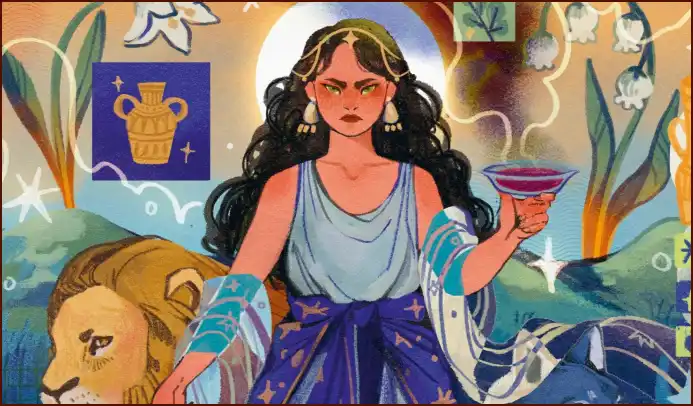Alongside the Horned God, a powerful female deity is central to most witchcraft traditions: the Goddess of the Witches. She represents the divine feminine in all its aspects, embodying creation, fertility, wisdom, and destruction.
Table of Contents
Unlike the singular, paternal God of monotheistic religions, the Goddess is often seen as multifaceted, most famously in her form as the Triple Goddess. This archetype represents the three main stages of a woman’s life and the corresponding phases of the moon: the Maiden, the Mother, and the Crone. This powerful symbolism connects witchcraft to the cycles of nature, life, and the cosmos.
🌙 The Triple Goddess: Maiden, Mother, and Crone
The concept of the Triple Goddess is one of the most important theological ideas in modern witchcraft. Each aspect represents a different facet of the divine feminine and is associated with specific magical properties and phases of the moon.
The three aspects are:
- The Maiden: Associated with the waxing moon, she represents new beginnings, youth, innocence, and enchantment. She is often linked to goddesses like Artemis or Persephone.
- The Mother: Associated with the full moon, she is the nurturer, the creator, and the embodiment of fertility, love, and power. She is linked to maternal goddesses like Demeter or Isis.
- The Crone: Associated with the waning moon, she represents wisdom, experience, death, and rebirth. She is the keeper of mysteries and is linked to underworld goddesses like Hecate.
🏛️ Historical Roots and Ancient Goddesses
The worship of a powerful Great Goddess is one of the oldest forms of human religion, with evidence stretching back to the Paleolithic era. While the modern concept of the Triple Goddess was popularized in the 20th century, it draws upon a rich history of goddess worship in the ancient world. Many ancient goddesses were seen as having multiple aspects that correspond to the Maiden-Mother-Crone archetype.
The Greek goddess Hecate, for example, was frequently depicted with three faces, representing her dominion over the heavens, the earth, and the underworld, as well as her association with crossroads. The Roman goddess Diana was also seen as a triple deity, identified with the moon in the sky (Luna), the earth (Diana), and the underworld (Proserpina).
🌿 Nature and the Divine Feminine
Ultimately, the Goddess of the Witches is a personification of nature itself. She is the earth from which all life springs and to which all life returns. In witchcraft, divinity is not seen as separate from the natural world but as immanent within it. The Goddess is in the rustling leaves, the flowing rivers, and the cycles of the moon. Witches seek to connect with this divine feminine energy through ritual, magic, and a deep reverence for the earth and its creatures.
—
Atkinson, Hazel. The Extraordinary History of Witches. 2025.
More Topics
- Curses: The History of the Evil Eye and Binding Magic
- Magical Plants: A Witch’s Garden of Herbs and Poisons
- Roman Magic: Curses, the Strix, and Everyday Protection
- Circe: The Greek Sorceress of Transformation and Myth
- Greek Magic: Hecate’s Power, Oracles, and Enchantresses
- Japanese Magic: Yōkai, Onmyōdō, and Supernatural Folklore
- Empress Chen Jiao: The Royal Scandal of Witchcraft in Han China

